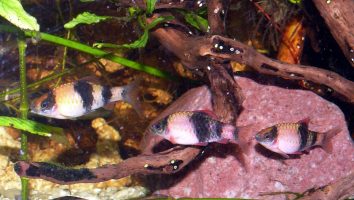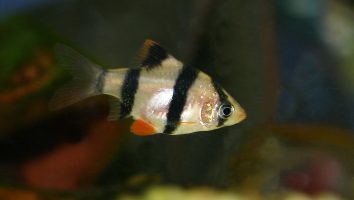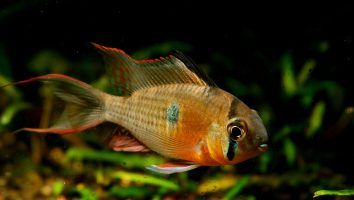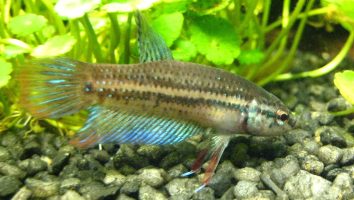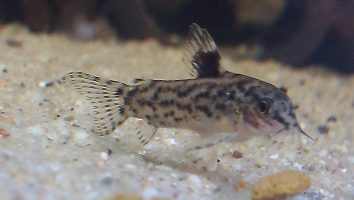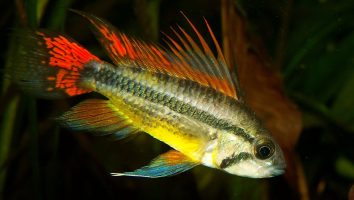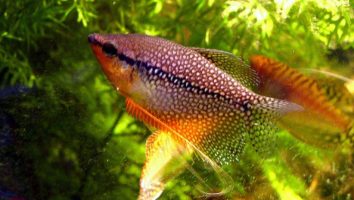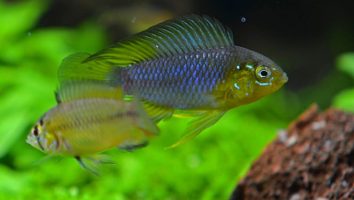Zebra loaches are one of our all-time favorite freshwater fish. They’re beautiful, unique, and relatively easy to care for.
But even though they’re not difficult to keep, there are still a few things you need to know to do it right.
This guide will teach you everything you need to know about zebra loach care. You’ll learn about their diet, size, lifespan, and more!
Table of contents
Species overview
Zebra loaches (Botia striata) are a type of freshwater fish that is native to Southeast Asia. Their natural habitat includes parts of Indonesia, Thailand, and Malaysia.
They prefer slow-moving waters with a lot of vegetation. This is something that is common to many loach species.
Zebra loaches are a peaceful fish that does well in community tanks. They are compatible with a wide variety of tank mates and get along well with other fish.
The main thing that makes zebra loaches stand out is their unique striped pattern. This is what gives them their name and makes them a popular choice for many aquariums.
Appearance
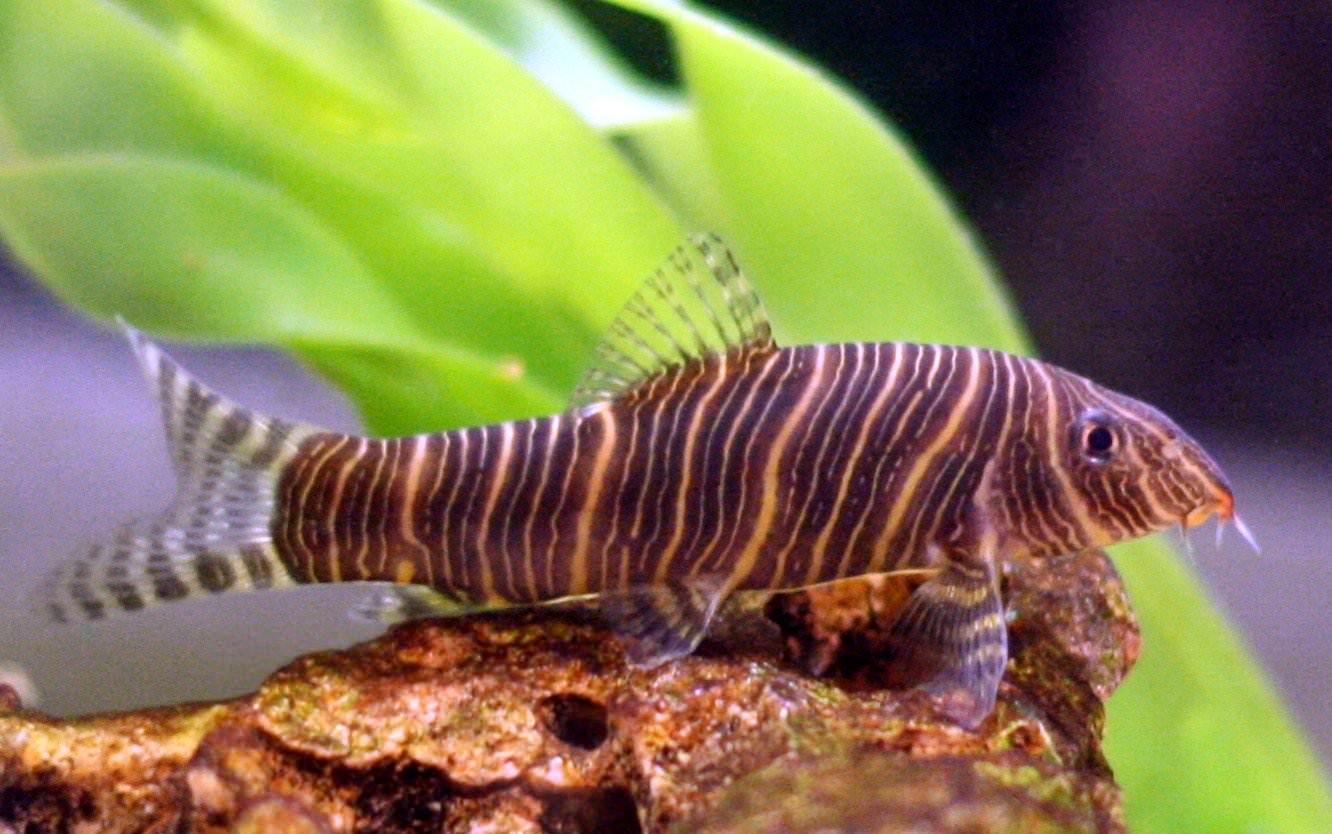
The Zebra Loach is a beautiful freshwater fish that definitely catches the eye. As you can probably guess from their name, these fish have a black and white striped pattern that runs the length of their bodies.
This striking pattern is what really makes this fish stand out in a tank.
The Zebra Loach is a relatively small fish, only growing to be about 2.5 inches long at most. They have a long and thin body shape that is slightly flattened from top to bottom.
This species has a pair of small barbels on their lower jaw that they use to help find food. They also have a rather small mouth that is located at the very front of their face.
The fins on a Zebra Loach are all fairly standard. They have a moderately sized dorsal fin that is located about two-thirds of the way back on their body.
Their anal fin is a similar size and is located just behind the dorsal fin. Both of these fins have a black margin that really makes them stand out.
The caudal fin is forked and slightly taller than it is wide. The pectoral fins are located on the sides of their body and are used for steering and stability.
Lifespan
In the wild, a zebra loach’s lifespan is only about 3 years.
In captivity, however, they can live much longer — up to 10 years, or even longer with excellent care.
Factors that impact a zebra loach’s lifespan in captivity include water quality, diet, and tank mates.
Size
Zebra loaches usually max out at about 4 inches, but some have been known to grow up to 6 inches.
Tank
Tank Size
The minimum tank size for a zebra loach is 20 gallons. This is assuming you’re keeping them in a school of at least 5 or 6 fish (which you should).
We personally recommend a slightly larger tank if you can accommodate it. Every extra space will make a big difference and allow you to keep a larger school or more tank mates if you’re interested in a community tank.
Water Parameters
Zebra loaches are very sensitive to water conditions and can be easily stressed. As a result, they are not the best fish for beginner aquarists.
To keep your zebra loach healthy, it’s important to maintain stable water conditions. That means regular water changes and testing to be sure the levels are within the ideal range.
The ideal water parameters for zebra loaches are:
- Water temperature: 72 to 82 degrees Fahrenheit
- pH levels: 6.5 to 7.5
- Water hardness: 2 to 12 dGH
- Alkalinity Levels: 4-8 dKH
What To Put In Their Tank
Zebra Loaches are a peaceful species that do best in groups. They are shy by nature and will often spend their time hiding.
Because of this, you want to make sure there are plenty of places for them to hide. This can be accomplished by using rocks, driftwood, and plants.
We recommend using a dark substrate as well. This will help them feel more comfortable and make it easier for them to hide.
As for plants, anything that provides them with plenty of hiding spots will work. We recommend using plants like Java Moss, Hornwort, or Water Wisteria.
You should also avoid using anything that has a lot of sharp edges. This can injure your fish if they bump into it.
Common Diseases
There are a few diseases that you should be aware of when keeping zebra loaches. The most common one is ich, which is a parasites that affects freshwater fish.
This disease is characterized by white spots on the body of your fish. It can be treated relatively easily, but it’s important to act fast. If you don’t, ich can quickly kill your fish.
Other diseases that can affect zebra loaches include fungal infections and parasites. Both of these are relatively easy to treat, but they can be deadly if left untreated.
The best way to prevent disease is to simply keep your tank clean. Zebra loaches are relatively hardy fish, but they’re not immune to poor water conditions.
Do your best to keep the water quality high and you’ll reduce the chance of your fish getting sick.
Behavior & Temperament
Zebra loaches are another species of loach that are peaceful and get along well with other fish. They’re a little more active than Kuhli loaches and tend to swim in the middle of the water column more often.
Zebra loaches are also known to be social creatures. They do best when they’re kept in groups of at least five or six fish. This way, they can interact with each other and feel more comfortable in their environment.
Like other loaches, zebra loaches are bottom-dwellers. They spend most of their time scavenging for food or resting. You might see them swimming up to the surface of the water to grab a gulp of air every once in a while, but they typically stay near the bottom.
Zebra loaches are peaceful by nature and won’t bother other fish unless they feel threatened. They have sharp spikes on their body that they can use to defend themselves if necessary.
Tank Mates
Zebra loaches are a peaceful species that do well in community tanks. They’re not particularly finicky when it comes to tank mates.
That said, there are a few things to consider when adding them to your aquarium.
First, these fish come from fast-moving waters in nature. As a result, they prefer a bit of flow in the aquarium. A simple powerhead will do the trick.
Secondly, zebra loaches like to hide. Be sure to add plenty of rocks, driftwood, and plants to the aquarium to give them places to hide.
Finally, zebra loaches are a schooling species. They do best when kept in groups of six or more. This will help reduce stress and make them feel more comfortable in their environment.
With that in mind, here are some compatible tank mates for zebra loaches:
- Cherry Shrimp
- Ghost Shrimp
- Amano Shrimp
- Siamese Fighting Fish
- Guppies
- Platies
- Swordtails
- Mollies
- Endler’s Livebearers
Breeding
Zebra loaches are one of the more difficult species to breed in captivity. They’re not very common in the aquarium trade, so there’s not a lot of information out there on their breeding habits.
The first step is to sex your fish. Zebra loaches are difficult to sex because males and females look very similar. The best way to tell them apart is by looking at their tail fins. Males have longer and more pointed fins than females.
Once you’ve sexed your fish, you’ll need to set up a breeding tank. The tank should be at least 20 gallons and filled with soft, acidic water. Add a lot of live plants and some driftwood for the loaches to hide in.
You’ll also need to add a spawning mop or some other type of soft material for the loaches to lay their eggs on.
When the tank is set up, add two females for every male. The fish will need a lot of hiding places, so make sure there are plenty of plants and driftwood in the tank.
The next step is to trigger spawning. The best way to do that is to lower the water level and raise the temperature a few degrees. You can also add some peat to the water to lower the pH.
Once the conditions are right, the fish will start to spawn. The female will lay her eggs on the spawning mop or other soft material. The male will then fertilize them.
Once the eggs are fertilized, the male will guard them until they hatch. This can take anywhere from 5 to 14 days.
Once the eggs hatch, you’ll need to remove the adults from the tank. The fry will feed on microscopic organisms in the water. You can supplement their diet with baby brine shrimp or other tiny live foods.
As the fry grow, you can start to introduce them to crushed flake food.
Conclusion
Zebra loaches are a great addition to any tank. They’re active and interesting to watch, but they’re also relatively easy to care for.
We do recommend that you keep them with other fish, as they can be a little shy. But overall, we think they’re a great choice for most fishkeepers.


